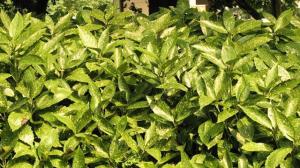What Plant Removes Nitrates from Water?
Nitrates are one of the most common pollutants found in water bodies. They are a type of nutrient that plants need to grow, but at high levels, they become toxic to the environment and humans. Nitrates come from agricultural fertilizers, industrial wastewater, and human sewage. Fortunately, there is a type of plant that can help remove nitrates from water naturally. In this article, we will explore the question: "What plant removes nitrates from water?".
The Water Hyacinth Plant
The water hyacinth plant (Eichhornia crassipes) is a floating plant that is known for its ability to absorb nutrients from water. It is native to South America but has spread to many other parts of the world, including Africa and Asia. The water hyacinth plant has an impressive growth rate and can double its biomass every two weeks under optimal conditions. This makes it an ideal candidate for removing nitrates from water.
The water hyacinth plant's ability to absorb nitrates from water is due to its complex root system. The roots of the plant have tiny hairs that absorb nutrients from the water. The absorbed nutrients are then transported to the leaves and stems of the plant to support its growth. As the plant grows, it assimilates the nitrates into its biomass, effectively removing it from the water.
The Benefits of Using the Water Hyacinth Plant
There are several benefits to using the water hyacinth plant for nitrate removal. First, it is a natural and sustainable solution that does not require chemicals or energy-intensive processes. Second, it is a cost-effective solution since the plants grow rapidly and can be easily harvested. Third, the water hyacinth plant has additional benefits such as providing food and habitat for fish and other wildlife.
However, there are also some potential drawbacks to using the water hyacinth plant. The plant has a high growth rate, which means that it can quickly become invasive and overtake water bodies. This can lead to problems such as reduced oxygen levels and blockage of waterways. Additionally, the plant requires sunlight to grow, which may limit its use in areas with low light levels.
Conclusion
The water hyacinth plant is a promising solution for removing nitrates from water. Its ability to absorb nutrients from water and its rapid growth rate make it an ideal candidate for natural nitrate removal. However, it is important to consider the potential drawbacks of using the plant, such as its invasiveness and light requirements. Overall, the water hyacinth plant offers a natural and sustainable way to address the problem of nitrate pollution in our water bodies.

 how many times do yo...
how many times do yo... how many planted tre...
how many planted tre... how many pine trees ...
how many pine trees ... how many pecan trees...
how many pecan trees... how many plants comp...
how many plants comp... how many plants can ...
how many plants can ... how many plants and ...
how many plants and ... how many pepper plan...
how many pepper plan...






























